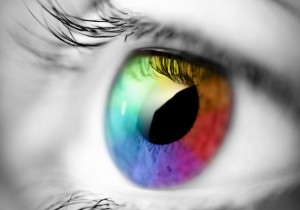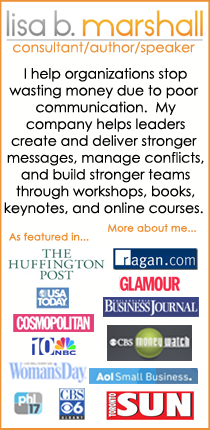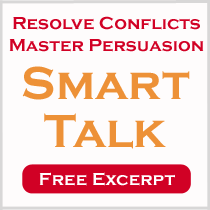Common Eye Contact Mistakes
 “The eyes are the windows of the soul.” I’ve always really liked that saying. For me it says that we get meaning from looking into someone’s eyes; sometimes even more than what the words express. When I hold someone’s gaze, and I mean really look into their eyes, it make me feel like I am physically closer… like I am making a connection.
“The eyes are the windows of the soul.” I’ve always really liked that saying. For me it says that we get meaning from looking into someone’s eyes; sometimes even more than what the words express. When I hold someone’s gaze, and I mean really look into their eyes, it make me feel like I am physically closer… like I am making a connection.
Eye Contact: Your Most Powerful Weapon
As a member of the human race we instinctively know the importance of eye contact. It’s how you know if someone is paying attention or how you know if someone finds you attractive. In North America and most of Europe eye contact is critical for establishing trust. In fact, when a person averts his eyes he’s perceived as untrustworthy, superficial, and non-receptive. But, it in today’s global workplace it is also important to recognize that in some cultures steady eye contact is considered impolite or aggressive.
When making presentations eye contact is very important. In fact, your goal should be to maintain eye contact 90% of the time.
When delivering a talk, I look directly into the eyes of a person and communicate a thought, then when I would normally look away, I just move to another set of eyes. So when I mentally shift from one idea to another, I also physically shift my eyes to a new person—I might stay with one person for as long as 20 or 30 seconds.
Of course, you don’t want to mechanically zig zag through the room, you’ll want to naturally move from person to person, and in a very large room from section to section. Keep in mind that the sweet spot in a large auditorium is about 2/3 of the way back towards the center. When you look there, a good portion of the audience will think you are looking directly at them, but don’t forget to include the people in the very front, all the way back, and both sides.
Most People Don’t Maintain Enough Eye Contact
So if you’ve had any public speaking training, it’s likely you already know the importance of eye contact, yet, I’ve found that most people don’t maintain enough eye contact during presentations; again your goal should be have direct eye contact 90-95% of the time. This means, not looking at your projected slides, and instead looking at all faces –including people who are frowning, and not looking up or down to plan your words.
Talk to Your Audience, Not the Slides (Pitch the Laser Pointer)
By far, the most common mistake is turning to look at the projected slides. This happens because most people use their slides as their notes. They jam a bunch text on a slide and then when they are presenting, they turn their body to read the information that’s on the slide. And the problem is worse when they use a laser pointer—that’s when even more turning and talking to the screen occurs.
So How Do You Make it Better?
The key to good eye contact is preparation. You’ll need to prepare ahead of time so that you’ll never have to look at your projected slides.
If you need notes to guide you through, then use a single sheet of paper –with big print—so that you can quickly glance at it and then return your gaze back to the audience before you speak. Or position your laptop so that it is in easy view in front of you. I always request a separate small table so that can I always see my laptop, even when I am walking around the stage.
Give yourself time to adjust to this technique, it takes practice, but really works well. Oh, and keep the laser pointer handy, just in case you need to do some unplanned pointing during the Q&A period.
Yes, Even the Curmudgeons Need Your Eye Contact
The second most common mistake is not giving everyone in your audience eye contact. Particularly at the beginning of a speech, many speakers are nervous so they tend to look for the expressive, reassuring faces in the crowd. Ones that are smiling and nodding, and encouraging. And that’s OK at the very beginning, especially if it relaxes you, but as you move through the speech you need to remember to include all the people in the audience. Including grumpy faces, frowning faces, and people with no expression at all.
There is one caveat with this one. In today’s global workplace, it is also important to be respectful with your eye contact. If you notice someone looking uncomfortable or uneasy when you look at them, it’s best to just to move on to another face.
Up, Up and Away
Another common mistake that frequently occurs is also one that most people are unaware of. When we engage in normal conversation typically we maintain eye contact, except when we are planning our next words. Depending on your cultural background, you may look up and away, you may look down, or you may look to the side. Some psychologists think we do this because concentrating on a person’s face requires complex processing and by looking away we free up some processing space.
In casual conversation, this habit doesn’t negatively impact the communication. However, when making a presentation or participating in an interview, this behavior makes the speaker look unprepared and therefore somewhat disrespectful. Unfortunately, for non-native speakers, this happens even more frequently.
So how do you solve this problem? Well, of course, practice helps reduce them amount of spontaneous word planning. It also helps to try to train yourself to look between people instead of up or down if you need to take a moment to plan your next words.
So there you have it, the top three common eye contact mistakes: looking at the projected slides, not including everyone, and looking away when word planning. Actually there are several other mistakes, but we’ll have to cover them in another episode.
If you enjoyed this post, you may also want to read:











Share Your Thoughts!